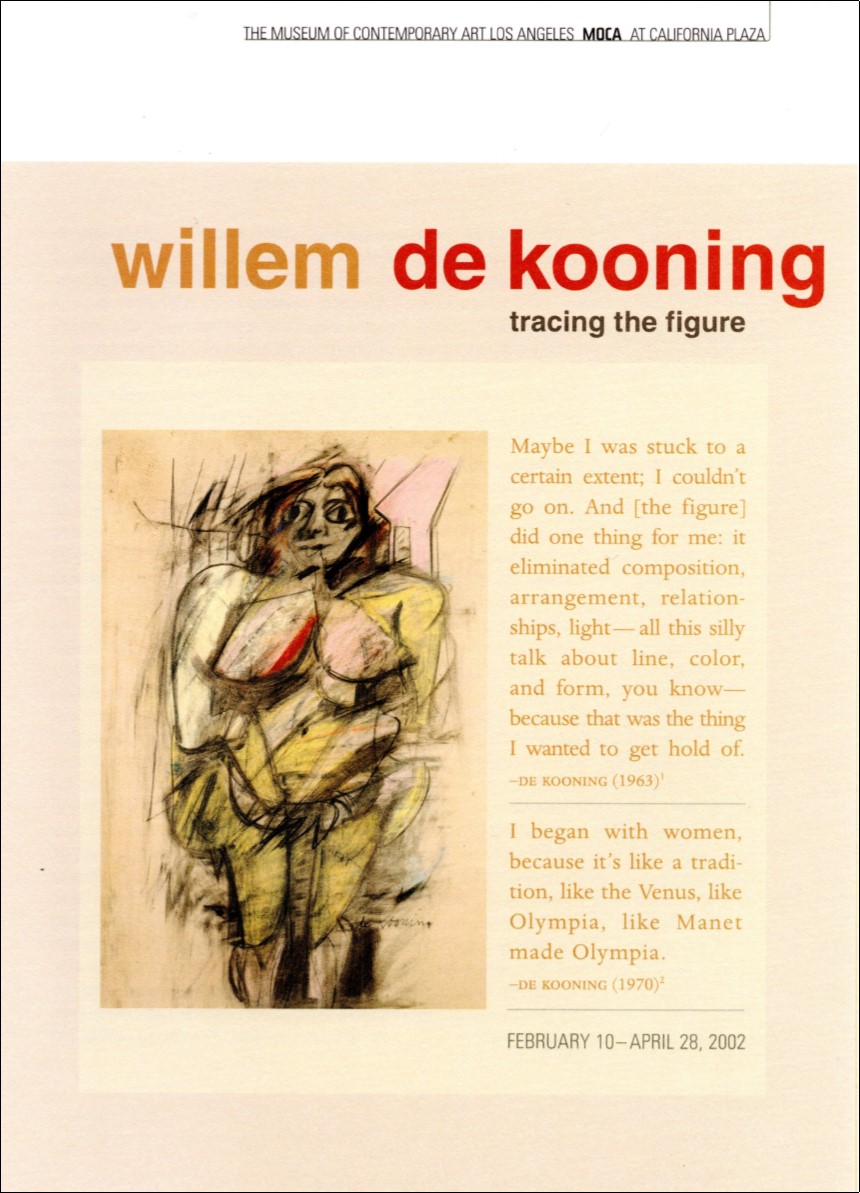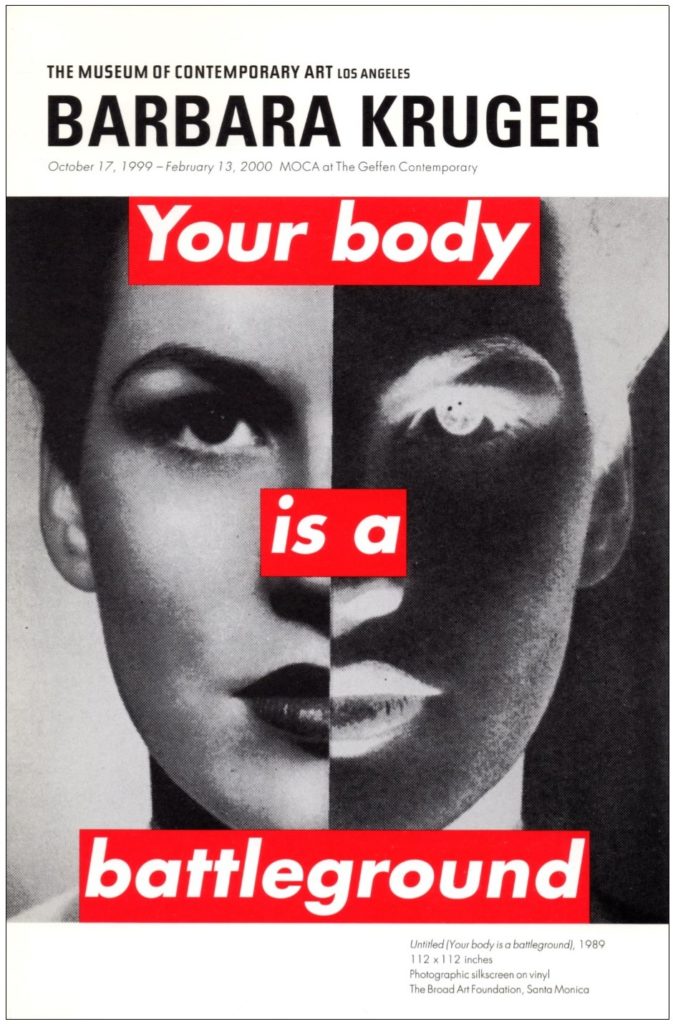While pretending to attend community college in the early/mid-1980s, I was enrolled in a drawing class in which the teacher described several of my sketches as “de Kooningesque.” At the time, I had very little knowledge of Willem de Kooning’s achievement, and wasn’t familiar with much beyond Woman I (1950-52) and Woman and Bicycle (1952-53), so I took her remark as a cue to investigate his work. I was immediately entranced by his early 1940s Women series – I loved the push/pull dynamic which results from the blurred distinction between the figure and ground. I loved the juxtaposition of the modeled and the flat portions of the fragmented bodies. I loved the geometric shapes which only minimally suggest interior environments. Although de Kooning subsequently painted many other more celebrated series, those early Women continue to be among my favorites in an oeuvre as rich as any ever produced. I soon became a fan of both his paintings and his drawings from all periods of his career, and over the years have been lucky enough to have seen quite a lot of his work, in both group and solo exhibitions.
The first time I visited what was then the new San Francisco Museum of Modern Art on Third Street was in 1995 to see the de Kooning show The Late Paintings, The 1980s. It was the first time a large selection of the titular work had been seen, and there was much talk about de Kooning’s late ’80s Alzheimer’s diagnosis; how much of a hand his assistants had had in producing the work; and whether the paintings were worthy of being considered part of his oeuvre. It has been over twenty-five years since I saw the show, but I do distinctly remember two specific impressions I had – one: that the paintings seemed to change over the course of the day, going from subtle and elegant to stark,1 and two: while a disease was ravaging his mind, de Kooning was still a better painter than anyone else. The 1980s work comprises an evolving yet coherent period which is the most lyrical of his career – although there are similarities between these paintings and those of other earlier periods, the simplified palette and open compositions make them very different from any of his prior work.
In 2002, I saw the de Kooning drawing survey Tracing the Figure, which included work from the late 1930s to the mid-’50s, at the Los Angeles Museum of Contemporary Art and again at the SFMOMA. De Kooning’s processes of painting and drawing are often indistinguishable – he drew on his paintings and painted on his drawings. In addition to graphite, charcoal, pastel, crayon, and ink, he also used oil and enamel in his works on paper, and in the late ’40s started cutting up drawings to use as collage material. A good portion of the exhibition consisted of work related to his series of Women paintings from the early ’50s, by which time he also sometimes, in a striking Exquisite Corpse2-like manner, fashioned the figure from portions of two or more separate drawings. I was also particularly attracted to the results of the subtractive methods he employed – the smearing and the textured pentimento which remained after he erased sections of the image. Tracing the Figure was not only an extraordinary look at the drawings of a master, but also a comprehensive reference on the techniques of mark-making.
Willem de Kooning put down the tools of his labor for the last time in 1991, about two years after being diagnosed with Alzheimer’s. He passed away on March 19, 1997 at the age of ninety-two. If pressed to name my favorite painter, my answer might vary depending on whose work I happen to be fixated at that particular time. However, de Kooning would always be at least in the top two or three, a position he has held since shortly after I was prompted by a compliment to study his body of work. Thank you, Melinda Barbera.
1 Did the SFMOMA galleries have skylights prior to the re-model? I hope so, because the only other explanation I can think of for this phenomenon – which I’ve never noticed during any other exhibition – is that it was just my imagination running away with me.
2 Exquisite Corpse, or Cadavre Exquis, is a Surrealist game which generates collaborative compositions. The figure is divided into three or four horizontal sections. The first player draws the head and folds the paper to conceal what has been done. The next participant draws the torso and folds the paper again; the process is repeated until the figure is complete.









